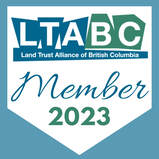The Garry Oak Meadow Preservation Society’s nursery is located on the traditional territory of the W̱ SÁNEĆ people encompassing the five local communities: BO,ḰE,ĆEN (Pauquachin), MÁLEXEȽ (Malahat), W̱ JOȽEȽP (Tsartlip), W̱ ,SIKEM (Tseycum), and S,ȾAUTW̱ (Tsawout). We acknowledge and thank the W̱ SÁNEĆ people on whose traditional territory we live, learn, work, and teach. Our advocacy efforts extend over the lək̓ʷəŋən territory, known today as the Esquimalt (Kosapsom) and Songhees Nations. The W̱ SÁNEĆ and lək̓ʷəŋən people have lived and worked on this land since time immemorial and whose historical relationship to the land and territories continues to this day.
The Garry oak’s colonial and scientific name, Quercus garryana, was named by Botanist David Douglas in the early 1800’s to honor his friend Nicholas Garry, an officer in the Hudson Bay Company. The SENĆOŦEN word for Garry oak used by the W̱ SÁNEĆ people is ĆEṈ¸IȽĆ (pronounced chung-ae-th-ch). In Lekwungen, the word for camas and Garry oak ecosystems is kwetlal. Garry oak ecosystems arrived after the glacial retreat approximately 10,000 years ago, and at least 1,645 organisms have co-evolved within this unique ecosystem. Indigenous agroecological management over thousands of years formed the oak savannah.
The Garry Oak Meadow Preservation Society supports the improvement of restoration of endemic plant education, growth, and distribution. Our primary focus is on ecological restoration and remediation of impacts on the traditional lands due to density and development. Native plants can help us address the major challenges of times (reconciliation, climate, extinction, health).
The Garry oak’s colonial and scientific name, Quercus garryana, was named by Botanist David Douglas in the early 1800’s to honor his friend Nicholas Garry, an officer in the Hudson Bay Company. The SENĆOŦEN word for Garry oak used by the W̱ SÁNEĆ people is ĆEṈ¸IȽĆ (pronounced chung-ae-th-ch). In Lekwungen, the word for camas and Garry oak ecosystems is kwetlal. Garry oak ecosystems arrived after the glacial retreat approximately 10,000 years ago, and at least 1,645 organisms have co-evolved within this unique ecosystem. Indigenous agroecological management over thousands of years formed the oak savannah.
The Garry Oak Meadow Preservation Society supports the improvement of restoration of endemic plant education, growth, and distribution. Our primary focus is on ecological restoration and remediation of impacts on the traditional lands due to density and development. Native plants can help us address the major challenges of times (reconciliation, climate, extinction, health).

